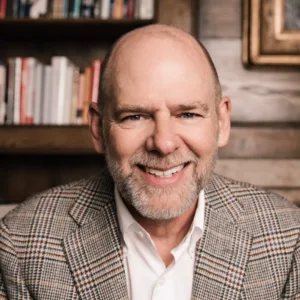- Culture
- August 26, 2023
- Mark Miller
Don’t Change That!
I believe that leaders must create change. If you and I can’t create positive change, we won’t be able to lead for long. But, there’s another facet of our role – we are also the guardians for what should NOT change. Jim Collins wrote about this idea in…

I believe that leaders must create change. If you and I can’t create positive change, we won’t be able to lead for long.
But, there’s another facet of our role – we are also the guardians for what should NOT change.
Jim Collins wrote about this idea in Built to Last. He used the phrase “Preserve the core and stimulate progress.” He said this is the hallmark of a visionary company.
Although Jim’s statement makes perfect sense, it is often the failure of leaders to get this right that stunts the growth of their organization. Or, in extreme cases, the absence of this approach leads to the death of their organization.
Why is it so tricky to pull this off? There are numerous reasons. Here are three of them…
- Leaders confuse what is core and what is not. Most of our current practices are not core. We just lose sight of what is and what isn’t. This gets even harder if we’ve been successful in the past. Success is a lousy teacher and an even worse catalyst for change.
- Leaders become defensive in their thinking and outlook. When we’re playing to win, we tend to be more aggressive regarding change. When our mind shifts to defense, we can find ourselves playing not to lose. When this happens, we can easily cling to outdated methods and practices.
- Leaders get comfortable, or they get lazy. Change is hard. Doing the same old routine is easy; even if it doesn’t work as well as it once did.
What should be core? The specifics are totally dependent on the organization. Generically speaking, the list of core elements should be very short. Much of what leaders consider core isn’t (see #1 above). Typically there are three elements that are core in every organization.
- Purpose – The “why” behind your organization is core. It rarely, if ever, changes. This provides real stability when the strategies and tactics are in a constant state of flux. It can become the cornerstone for your business. In times of change, people can draw comfort and strength from an unchanging anchor.
- Core Values – The foundational beliefs that drive the behavior in the organization shouldn’t really change. As Jim Collins said while he was still a professor at Stanford, “If you could ever see yourself changing one of your values, it’s not [a value] – it’s a strategy.”
- Fundamental operating principles – These are unique to an organization. They are more tangible than values. Sometimes, they are the practical manifestation of a value. They rarely change. Here’s an example from Chick-fil-A: Chick-fil-A restaurants are operated by independent business people, which is central to their success. It’s not a value, but it is something they haven’t changed since it was instituted in 1967.
In summary, here’s our leadership challenge: Be aggressive regarding the things that must change and vigilant regarding those that must not change. Work diligently not to confuse the two.
What is core in your organization?
Comments on Don’t Change That!

Mark Miller
Mark Miller is a Wall Street Journal and international best-selling author, communicator, and the former Vice President of High Performance Leadership at Chick-fil-A. Mark’s leadership journey at Chick-fil-A spanned 45 years, and today, he serves as the Co-Founder of Lead Every Day. Mark began writing almost twenty years ago, and with over one million books in print in more than twenty-five languages, his global impact continues to grow.